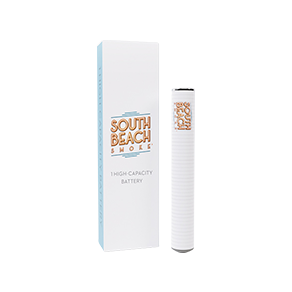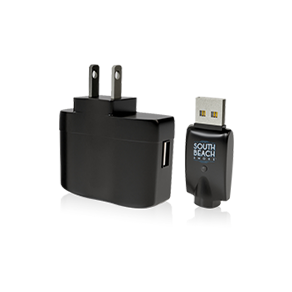- A
- B
- C
- D
- E
- F
- G
-
H
Holiday Vape Gift Guide How Do E-Cigarettes Work? How Long Do Vape Batteries Last? How Long Does Nicotine Stay In Your System? How to Deal with Smoking Relapse How to Manage Cravings and Withdrawal Symptoms When Switching to E-Cigarettes How to Pick the Right E-Cigarette Starter Kit for You How to Properly Use & Maintain Your E-Cigarette Device How To Troubleshoot Your Vape Pen Cartridge
- I
- J
- K
- L
- M
- N
- O
- P
- Q
- R
-
S
Shipping E-Cigs to Your City South Beach Smoke Mother's Day Vape Gift Guide South Beach Smoke Valentine's Day Vape Guide 2023 South Beach Smoke vs Logic E-Cigs South Beach Smoke's E-Cig Nicotine Delivery Program Spring Break Travelers E Cig Guide Summer Vape Guide 2022 Switch to Vaping to Beat the Cold
-
T
The Best Vape Pen Juice Flavors The Best Vape Temperature The Environmental Impact of Switching from Cigarettes to Vapes The Rise of Vaping Culture The Science Behind Vaping The Top Vape Influencers The Ultimate Guide to Transitioning from Smoking to Vaping: Common Mistakes and How to Avoid Them Throwing a 4th of July Vape Party Guide Tips for Vaping in the Heat Top 5 Must-Have E Cig Accessories Top 5 Vaping Blogs to Follow Top 5 Vaping Blogs to Follow Top Celebrities Who Vape 2022 Troubleshooting Common E-Cig Problems Troubleshooting Common E-Cigarette Problems
- U
-
V
Vape & Vape Juice Delivery to Your City Vape Battery Maintenance Vape Birthday Gift Guide Vape Pen Not Charging FAQ Vape Pod Vs Cartridge Which Is Better? Vape vs E Cig Comparison - Are E-Cigs and Vape Pens the Same? Vaping Abroad Vaping Etiquette - How to Vape In Public Vaping Facts vs Vaping Myths
- W
- X
- Y
- Z
- #
Vaping Facts vs Vaping Myths
The vape industry has been taking the world by storm, and with it, a wide variety of vaping myths have emerged. Vaping facts and myths can be hard to separate at times, but there's enough research out there now for people to get the truth if they know where to look. Read on below to take a deeper look at some popular vaping myths as well as the actual facts of the matter.
Vape Myth #1 – Vaping Leads to Smoking
This is one of the most popular myths about vaping, so it's worth addressing right off the bat. The false narrative that vaping is a gateway to tobacco smoking became more and more widely spread as vape products gained popularity, and even some prominent news outlets seem to have taken the bait.
The National Academies of Sciences, Engineering, and Medicine (NASEM), however, subscribe to science instead of click bait. A special NASEM panel investigated multiple studies which claimed vaping may prompt teens or young adults to try cigarettes. They ultimately stated that there is no empirical data to support a significant link between vaping and a long-term smoking habit.
Vape Myth #2 – E-Liquid Contains Antifreeze
This myth started because antifreeze contains diethylene glycol, and e-liquid contains propylene glycol. Those names may sound similar to someone without a background in chemistry, but they're completely different.
The word those names share, glycol, is only used to reference any type of organic compound from the chemical alcohol family (not to be confused with alcoholic beverages). Propylene glycol, the one in vapes, is just an aerosolizing agent, or something that converts something into a fine spray. It's also used to make asthma inhalers work.
The EPA also notes that propylene glycol is commonly used for air treatment in places like restaurants, hospitals, grocery stores, and households. It's used in things from food products to makeup. In other words, almost everyone encounters and ingests some amounts of propylene glycol regularly, and it's not considered dangerous.
Vape Myth #3 – Vaping Is Just as Dangerous as Smoking
Some rumors have said that vaping actually contains tobacco, or that it's just as dangerous as smoking because some e-liquid contains nicotine. The first part of that claim is the easiest to debunk because you can see it for yourself. If you try putting tobacco in your vaping device, it's not going to work.
Look to the American Academy of Family Physicians (AAFP) to find more research about the difference between vaping and tobacco smoking. They clearly state, "e-cigarettes are far less harmful than conventional cigarettes." The same study even says vaping may help adults quit smoking tobacco, and almost any scientific source will confirm that nicotine isn't what makes tobacco so dangerous.
Vape Myth #4 – E-Liquid Contains Formaldehyde
Vape detractors have tried to claim that there's just about everything in e-liquid, but the biggest myth we've heard besides antifreeze involves formaldehyde. Collectively, these represent some of the oldest (and most misleading) anti-vaping myths. Much like the antifreeze myth, the claims about formaldehyde are unfounded.
Burning e-liquids at 800°F or more might produce worrisome levels of formaldehyde, but that's roughly twice the temperature at which vapes work. Genuine studies find that vapes actually produce much lower levels of aldehydes than cigarettes– the levels are actually closer to the trace amounts you can find in normal room-temperature air.
Vape Myth #5 – Vaping Causes Popcorn Lung
If you've heard the popcorn lung myth, you can rest assured that almost no e-liquid manufacturers in the world still use diacetyl (the chemical in question) anywhere in their plants, much less in the final product. Further, tobacco smoke contains diacetyl concentrations much higher than any known e-liquid that has ever existed, and no cases of "popcorn lung" (aka bronchiolitis obliterans) have ever been reported in relation to cigarettes.
South Beach Vape
To learn more about the health science behind vaping, stop by South Beach Smoke and talk to our experienced staff. You'll be happy to know that Drexel University scientists studied vape shops and found no evidence of harmful contaminants like diacetyl, formaldehyde, acrolein, hydrocarbons, or other smoking-related carcinogens. You can also find testimonials online to learn how our own customers have benefitted from vaping.


